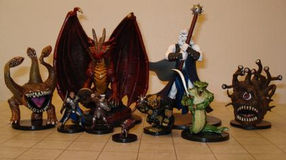Gamestorming #7: Learning Potential
- Caity Kelly
- Mar 14, 2019
- 2 min read

As I proceed through the design process of my learning game and ponders strategies for maximizing the knowledge acquisition of my final product, a particular concepts comes to my mind: Can any game, if presented in the right way, be a learning game? Minecraft is a classic example of this as we have seen quite a few studies and discussions regarding the range of skills its gameplay can cultivate. But when we get into more recreation-focused games like Call of Duty and Tomb Raider the conversation becomes more challenging.
In order for a game that was originally conceived to be a recreation game to become more learning focused, I believe that an element of instructor-guided discussion because necessary. Consider the following examples:
Skyrim: Every choice the player makes has consequences. Did you steal that loaf of bread? You pay a fine or go to jail. This could be helpful if used in tandem with philosophy discussions.
Call of Duty: You must plan how to preserve resources and what routes to take through enemy forces. Moreover, you have to keep track of multiple pieces of information at once on the display. This cultivates a range of cognitive skills.
Mass Effect: There is no right or wrong answer to your decisions but, whatever they are, they have profound impacts on the story. This allows players to practice a range of executive processes and metacognitive skills as they weigh the pros and cons of their actions.
Dragon Age Inquisition: Players must assign their agents to deal with specific problems that arise in the world. Doing this requires players to practice compare/contrast their agents' unique skill sets.
Spyro the Dragon: Players must thoroughly explore levels to find all treasure/objectives of interest. This requires substantial attention-to-detail skills.
These are only a few examples that, when paired with meaningful discussion, have the potential to aid the process of learning. This could be achieved, either through an instructor who is familiar with the game and is able to build a discussion around its core features, or through peer discussion.
For my own learning game, it certainly accomplishes learning through its core mechanics of matching appropriate levels of Bloom's Taxonomy with activity types. However, the game is designed to accommodate an extra layer of discussion to maximize the learning value. The directions will provide exact instructions for how to accomplish this, which could be helpful for other types of games as well.


Comentários